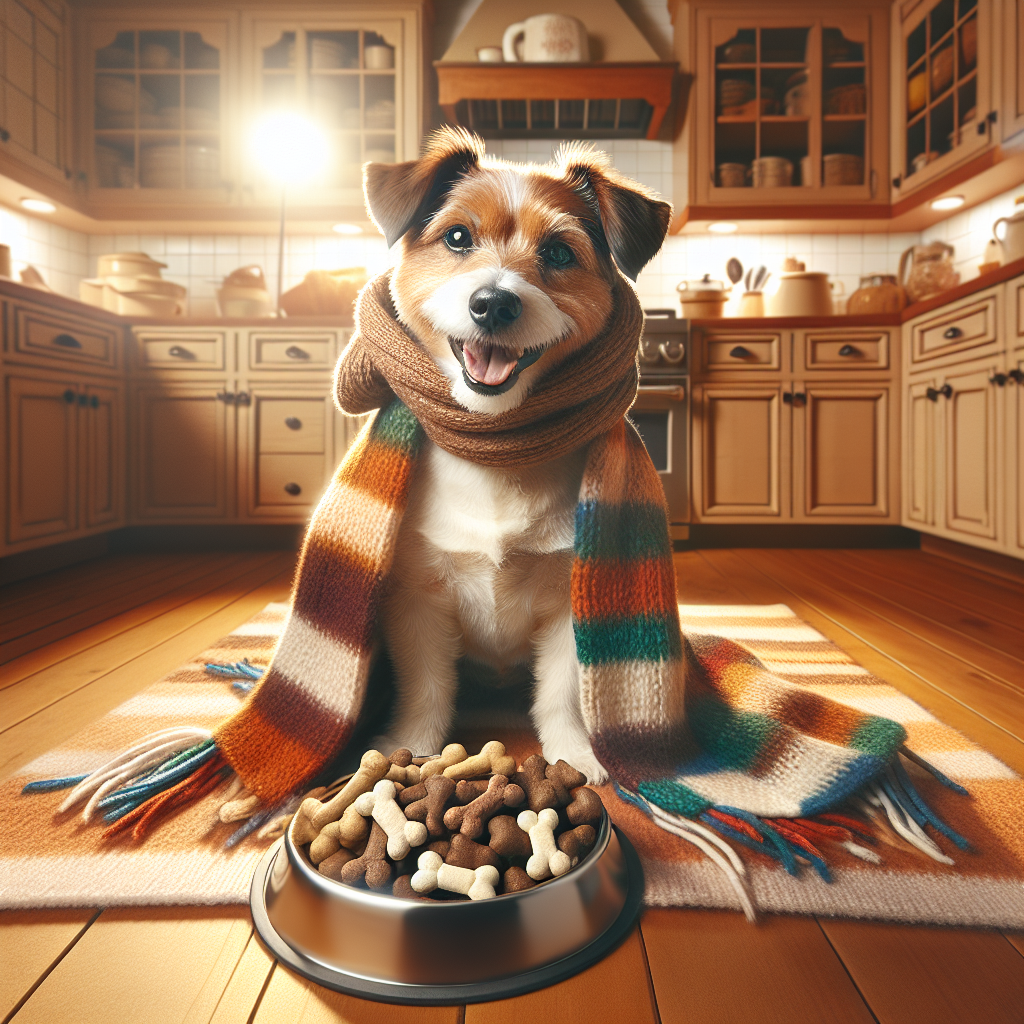Homemade Dog Treats Made with Baby Food: Easy Recipes!
For dog owners, there's nothing more rewarding than seeing their furry friends happy and healthy. One of the best ways to ensure your pet’s well-being is by making their treats at home. *Homemade dog treats made with baby food* offer a simple, healthy, and delicious option for your four-legged companion. These treats are not only easy to make but also allow you to control the ingredients, ensuring that your dog gets the best nutrition possible.
Baby food can be a fantastic ingredient for homemade dog treats because it is typically free from additives, preservatives, and artificial flavors that can be harmful to dogs. Plus, baby food is designed to be gentle on the stomach, making it suitable even for dogs with sensitive digestive systems. By choosing high-quality baby food, you can create treats that are both nutritious and tasty.
In this article, we will explore some easy and delightful recipes for homemade dog treats made with baby food. These recipes are designed to be quick and straightforward, perfect for busy pet parents. So, why not give it a try? Your furry friend will surely appreciate the effort!
Treat your furry friend to the joy they deserve with our range of delicious and nutritious dog treats. Visit Happypup.dog to explore more options!
Benefits of Using Baby Food
When it comes to making homemade dog treats, using baby food offers numerous benefits that can enhance your pet's diet. One of the primary advantages is the simplicity and purity of the ingredients. Baby food is specifically formulated to be gentle, nutritious, and free from harmful additives, making it an excellent choice for your dog's treats.
Here are some key benefits of using baby food in homemade dog treats:
- High Nutritional Value: Baby food is designed to meet the nutritional needs of infants, which means it often contains essential vitamins and minerals. This can help support your dog's overall health and well-being.
- Easy Digestion: Since baby food is made to be easily digestible for babies, it is also gentle on a dog's stomach. This is particularly beneficial for dogs with sensitive digestive systems or those recovering from illness.
- No Harmful Additives: Many commercial dog treats contain preservatives, artificial colors, and flavors that can be harmful to dogs. Baby food, on the other hand, is usually free from these additives, reducing the risk of adverse reactions.
- Flavor Variety: Baby food comes in a wide range of flavors, from fruits to vegetables to meats. This allows you to experiment with different tastes and find what your dog loves the most.
- Convenience: Baby food is readily available in most grocery stores and is often sold in small, convenient packages. This makes it easy to incorporate into homemade dog treat recipes without much hassle.
Using baby food in your homemade dog treats can provide your pet with a tasty and nutritious snack that you can feel good about. In the next section, we'll dive into some simple recipes that you can try at home.
Essential Ingredients for Recipes

Creating homemade dog treats with baby food is not only easy but also requires just a handful of essential ingredients that you likely already have in your pantry. These ingredients are chosen for their nutritional benefits and compatibility with baby food, ensuring that your dog gets a healthy and delicious treat.
Here are some of the essential ingredients you'll need for these recipes:
- Baby Food: Obviously, the star of the show! Opt for baby foods that are free from onions, garlic, and other harmful additives. Popular choices include pureed sweet potatoes, peas, carrots, and chicken.
- Whole Wheat Flour: A common base ingredient in most dog treat recipes, whole wheat flour adds fiber and nutrients. If your dog has a gluten sensitivity, you can substitute it with oat flour, rice flour, or almond flour.
- Eggs: Eggs act as a binding agent and add protein to the treats. They also contribute to a smooth texture, making the treats easier for your dog to chew and digest.
- Oats: Rolled oats are a fantastic source of fiber and can help with digestion. They also add a bit of texture to the treats, making them more enjoyable for your furry friend.
- Peanut Butter: Make sure to use unsweetened and unsalted peanut butter that does not contain xylitol, a sweetener that is toxic to dogs. Peanut butter is a great source of protein and healthy fats.
- Chicken or Beef Broth: Low-sodium broths can be used to add extra flavor and moisture to the treats, making them more appetizing for your dog.
These ingredients are not only nutritious but also versatile, allowing you to customize the treats according to your dog's preferences and dietary needs. In the following section, we will explore some easy and delicious recipes that incorporate these ingredients.
Step-by-Step Easy Recipes

Now that you have gathered all the essential ingredients, it’s time to dive into some step-by-step easy recipes for homemade dog treats made with baby food. These recipes are simple to follow and guaranteed to bring joy to your furry friend.
Recipe 1: Sweet Potato & Oat Treats
- Ingredients: 1 cup of pureed sweet potato baby food, 1 cup of rolled oats, 1 egg
- Instructions: Preheat your oven to 350°F (175°C). In a mixing bowl, combine the sweet potato baby food and egg. Gradually add the rolled oats and mix until a dough forms. Roll out the dough on a floured surface and cut into desired shapes using cookie cutters. Place the shapes on a baking sheet lined with parchment paper. Bake for 20-25 minutes or until golden brown. Let them cool completely before serving.
Recipe 2: Peanut Butter & Banana Bites
- Ingredients: 1 cup of pureed banana baby food, 1/2 cup of unsweetened peanut butter, 1 cup of whole wheat flour
- Instructions: Preheat your oven to 350°F (175°C). In a mixing bowl, combine the banana baby food and peanut butter. Gradually add the whole wheat flour and mix until a dough forms. Roll out the dough and cut into small bite-sized pieces. Place them on a baking sheet lined with parchment paper. Bake for 15-20 minutes or until firm. Allow them to cool before giving them to your dog.
Recipe 3: Chicken & Carrot Crunchies
- Ingredients: 1 cup of pureed carrot baby food, 1 cup of shredded cooked chicken, 1 cup of rice flour
- Instructions: Preheat your oven to 350°F (175°C). In a mixing bowl, combine the carrot baby food and shredded chicken. Gradually add the rice flour and mix until a dough forms. Shape the dough into small balls and flatten them slightly. Place them on a baking sheet lined with parchment paper. Bake for 25-30 minutes or until crispy. Let them cool completely before serving.
These recipes are not only quick and easy to prepare but also packed with nutrients that will benefit your dog’s health. Feel free to experiment with different baby food flavors and ingredients to find the perfect combination for your pup. Next, we will discuss some tips and tricks to make the treat-making process even smoother.
Safety Tips and Storage Advice

Ensuring the safety and longevity of your homemade dog treats is just as important as making them. Here are some essential safety tips and storage advice to keep your pup's treats fresh and safe to eat.
Safety Tips:
- Check Ingredients: Always verify that the baby food and other ingredients you use are free from harmful additives like onions, garlic, or excessive salt.
- Quality Control: Use high-quality ingredients, especially when it comes to baby food. Organic and natural options are preferable.
- Allergies: Be aware of any allergies your dog might have. Common allergens include grains, certain meats, and dairy.
- Portion Sizes: Ensure that the treats are appropriately sized for your dog. Too large treats can pose a choking hazard, especially for smaller breeds.
- Monitor Consumption: Even healthy treats should be given in moderation. Overfeeding can lead to obesity and other health issues.
Storage Advice:
- Airtight Containers: Store the treats in airtight containers to maintain their freshness and prevent them from becoming stale.
- Refrigeration: Depending on the recipe, some treats may need to be refrigerated. This is especially true for treats made with perishable ingredients like meats and dairy.
- Freezing: Homemade treats can be frozen to extend their shelf life. Simply place them in a freezer-safe bag or container, and they can last for several months.
- Labeling: Always label your containers with the date of preparation. This will help you keep track of how long the treats have been stored.
- Regular Checks: Periodically check the treats for any signs of mold or spoilage. If you notice any, discard the treats immediately.
By following these safety tips and storage guidelines, you can ensure that your homemade dog treats remain fresh and safe for your furry friend to enjoy. Up next, we’ll explore some creative variations and additional tips to make treat time even more exciting for your pup.
Frequently Asked Questions

When venturing into the world of homemade dog treats made with baby food, it's natural to have a few questions. Here are some of the most frequently asked questions that can help you get started:
Q: Can I use any type of baby food?
A: It's best to use baby food that contains simple, wholesome ingredients. Avoid baby foods with added sugars, salt, or artificial preservatives. Look for options that contain only fruits, vegetables, or meats.
Q: How long do homemade dog treats last?
A: The shelf life of homemade dog treats depends on the ingredients and how they're stored. Typically, treats can last up to a week at room temperature, two to three weeks in the refrigerator, and several months in the freezer.
Q: Can I customize these recipes?
A: Absolutely! Feel free to experiment with different flavors and textures to find what your dog loves best. Just make sure to avoid any ingredients that are toxic to dogs.
Q: How many treats can I give my dog per day?
A: Treats should make up no more than 10% of your dog’s daily caloric intake. This will vary depending on your dog’s size, age, and activity level. Always consult your vet for personalized advice.
Q: What if my dog has dietary restrictions?
A: If your dog has specific dietary needs, be sure to choose baby foods and other ingredients that align with those restrictions. It's always a good idea to consult your vet before introducing new treats.
We hope these FAQs have answered some of your burning questions. If you're ready to start making delicious and healthy treats for your dog, you've come to the right place. happypup.dog/">Treat your furry friend to the joy they deserve with our range of delicious and nutritious dog treats.






